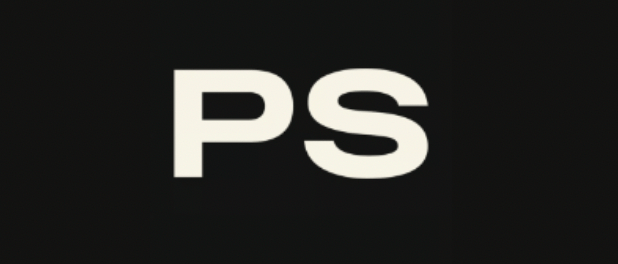- Profit Snack
- Posts
- 🦉 How Duolingo built a $9B brand without charging its users
🦉 How Duolingo built a $9B brand without charging its users

🦉 How Duolingo built a $9B brand without charging its users
Duolingo had 300,000 people on a waiting list before they even launched their product.
Their secret?
They knew most people wouldn't pay $1,000 to learn a language.
But for $0 and just 3 minutes a day?
That’s a different story.
And 12 years later, Duolingo has entered the market share, owning more than 60%.
How did Duolingo dominate their market? (And how can you steal their strategies to do the same?)
Great question.
Here’s what we got for ya:
💸 From $0 to Market Leader
🎰 Gamifying Duolingo
📈 Trick to 8M TikTok followers
Read Time: 4 min 3 sec

💸 From $0 to Market Leader
Luis Von Ahn (Founder) was a poor kid in Guatemala. His mom spent most of her money to send him to a private language school.
In countries like Guatemala, learning English doubles your income.
For Luis, English increased his earning potential tenfold.
At 18, he got a scholarship to Duke University in the US.
By 24, he was already a multimillionaire.
He created Duolingo so everyone could benefit from learning another language, like him.
Now, everyone from Bill Gates to refugees overseas are using Duolingo.
This January, Duolingo had over 16.2M downloads. Their closest competitor (Lingokids) only had 1.9M.

How did they do it?
Simple. They did what no one else was willing to: give it away for free. Kind of genius, right?
The issue was, when they started, it was David vs Goliath.
Their competitor Rossetta Stone was loaded with cash, had two more decades of experience, and wasn’t willing to give up their grip on the market easily.
Still, Duolingo’s offer made the choice a no-brainer.

Who wants to pay hundreds when you can pay absolutely nothing, nada, niets? (Nobody.)
But how did Duolingo build a $9B brand in 12 years off a free app?
Ads.
But not the Facebook ads everyones used to now. We’re talking pause your language lesson with a commercial break type of ad.
This may seem common place today, but at the time, it was game changing.
Still, it’s not the actual ads that make Duolingo billions.
The ads help make Duolingo free, which reels in customers.
But ads are also annoying. So Duolingo encourages people to upgrade to ad-free.
This is so effective that the 6% that do upgrade make up 72% of profits.
Clearly, Duolingo knows how to bring in customers and make money.
Now the question is: how do they keep them coming back?

Have a business or something you want to promote in front of 65,000+ readers?

Click the button below to apply now!

🎰 Gamifying Duolingo
Duolingo isn’t a language app. It’s a dopamine rollercoaster that happens to teach languages.
They’re so good at this that Duolingo has an industry leading retention rate of 68%.
They did these 4 things to gamify their business:
#1 - Streaks: Just like Snapchat, Duolingo learners keep a streak. The longer a streak gets, the more valuable it becomes. This is called sunk cost fallacy. In 2023, 3 million users had a streak of more than 365 days…
#2 - The Duolingo Scoreboard: This is what makes Duolingo addictive. Just like a game, you collect points, rewards and badges. Whenever you complete an action, you get a casino-worthy ca-ching. And each week, you compete in a scoreboard to level-up.
#3 - Notifications: Using AI, they found two factors that will boost your customer return rate.
Timing: Duolingo notifies you 24 hours after you last used the app. If you were free at 4pm yesterday, chances are you will be again today.
Personality: No message is boring. Duolingo’s sassy green owl “Duo” pesters users. These personified notifications well outperformed the boring ones. If you haven’t done your daily lesson, Duo guilts you into it: “Ready for a break? Your Japanese lessons won’t take themselves.”
#4 - Action: There is a clear call to action. It’s simple. Attainable. And all it takes is 3 minutes a day.
Duolingo doesn’t just engage users on their app. Recently, they became an internet sensation.

📈 Trick to 8M TikTok followers
Turns out, some people thought Duo’s passive aggressive notifications were a little too aggressive.
Users stormed to Tik Tok and posted memes about Duo.
This is how Duolingo grew it’s TikTok following from 100k to over 8M practically overnight.
Instead of backing down, Duolingo’s marketing team took it to the next level.
In today’s market, playing it safe won’t get you attention. When there are thousands of ads being thrown at consumers, you have to grab their attention.
Hence the birth of Duolingo’s ‘unhinged’ social media account…
@duolingo Reply to @taalianadeem the girls that get it, get it. ifykyk #Duolingo #comedy #trend #mylittlepony #workplace #DuaLipa #horsiegirl #dulapeep
Now, I’m not saying everyone should go post ads of green owls twerking to promote their business… but this is what makes Duolingo stand out.
Gen Z and millennials love Duolingo’s authenticity. (60% of Duolingo’s user base is under the age of 30!) Sometimes it pays to be different.
Not only is Duolingo posting creative content, but also commenting on people’s Duo memes.
Here are some of my favorite unhinged Duo responses:

For Duolingo, truly no publicity is bad publicity.

What'd you think of today's edition? |



Join the conversation